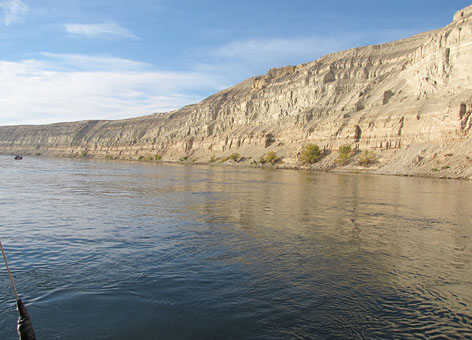Hanford Nuclear Site
Hazardous Waste Site | Tri-Cities, WA | 1940s to Present
Hanford infographic used for public outreach
What Happened?
The Hanford Nuclear Site is located in eastern Washington State, and encompasses more than 500 square miles of land. For nearly 30 years, The U.S. Department of Defense and the Department of Energy produced tons of plutonium for use in the atomic weapon program. Activities at Hanford produced significant quantities of waste containing hazardous chemicals and radioactive materials. Some of these contaminants leaked into the land and water, including into the Columbia River.
What Were the Impacts?
The contamination discharged into the Columbia River is a potential threat to fish and wildlife and their habitat. We are evaluating potential effects to a variety of ecological resources and habitats, including:
- Groundwater and surface water;
- Sediment, soil, and plants;
- Fish, amphibians, reptiles, birds, and mammals;
- Riparian and aquatic habitats.
In addition to understanding how ecological resources were injured, NOAA and our partners are evaluating potential public and tribal use injuries:
- Public use: Non-commercial recreational activities and other services provided in the area may have been affected by operations or contamination at the site.
- Tribal use: Tribal services may have been diminished in quality, or interrupted, by site operations and discharged contaminants.
What's Happening Now?
NOAA and our partners are currently in the initial assessment phase. We have identified a variety of cultural, economic, and scientific studies that will help identify and quantify injuries at Hanford. Once we understand the injuries we will be able to determine the type and amount of restoration required to offset those injuries.
Contacts
Troy BakerNOAA Assessment & Restoration DivisionSeattle, WA206-526-6606Troy.Baker@noaa.gov








